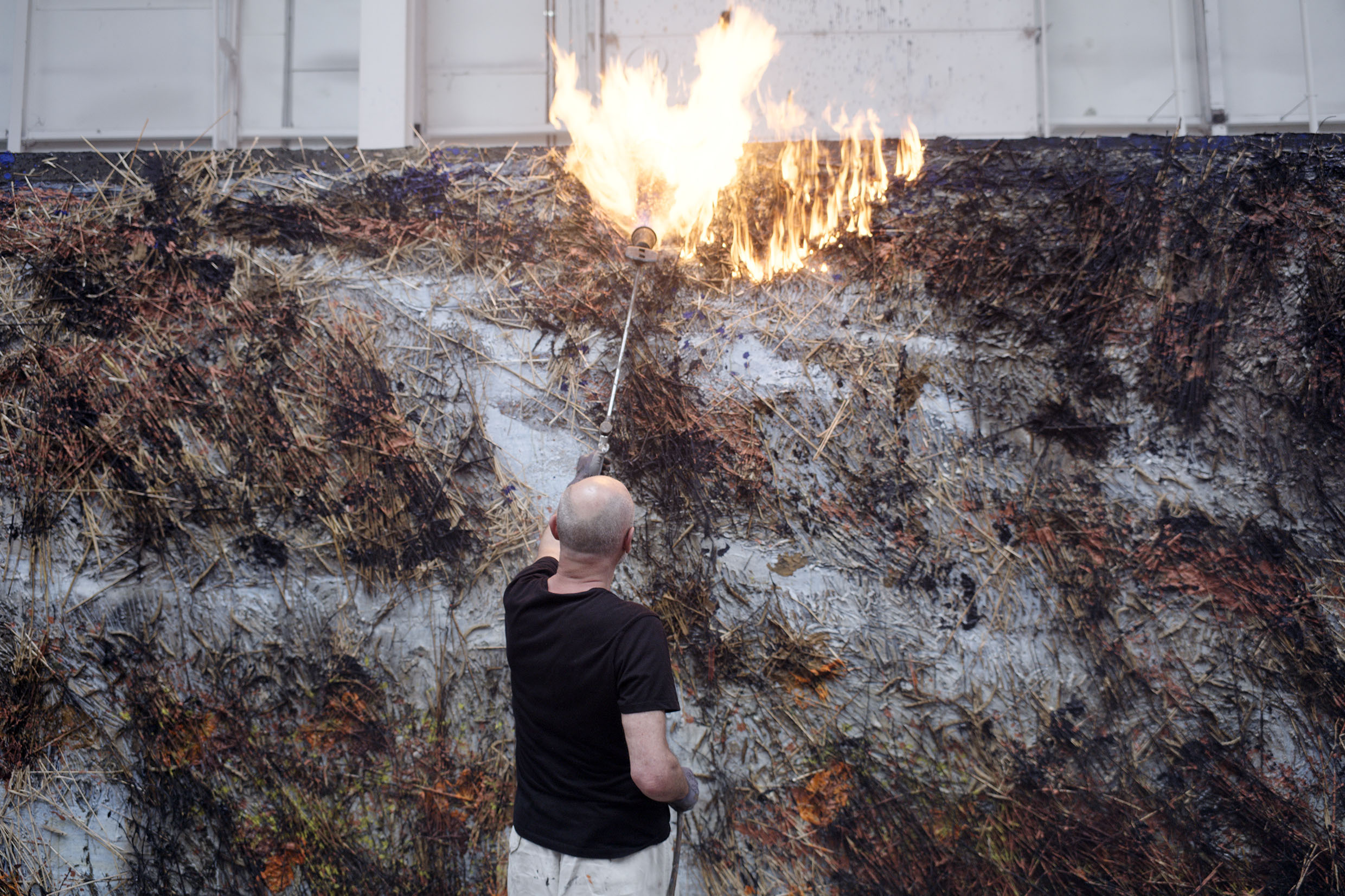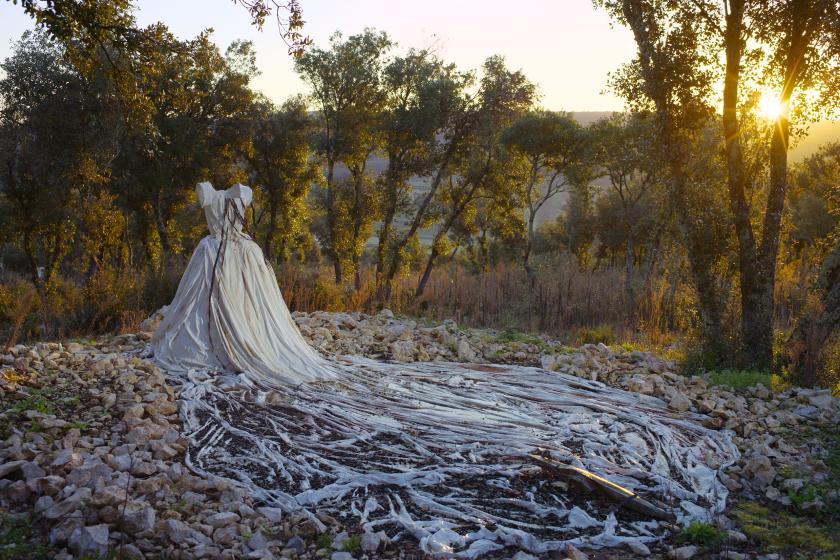Water glassily reflects in a bridal train, the sun moves between trees, giving way to metal book-leaves, and inside a warehouse so vast he cycles through it, stored cliffs of Anselm Kiefer’s work loom over him. Wim Wenders’ 3D cameras bring you inside the artist’s monumental, mythic world, which he is uniquely equipped to comprehend.
The two men met and talked for weeks in 1991, losing regular touch when Kiefer moved to the French studio in rural Barjac where Anselm begins. Two further years of conversation and observation went into this film, which portrays its artist by shifting impressionistically through time and space, reaching biography last. Anselm experiences Kiefer before reducing itself to facts.
Like Wenders’ Pina and his peer Werner Herzog’s Cave of Forgotten Dreams, which explored otherwise inaccessible, preserved prehistoric art, 3D is more than a fairground toy here, extending our lived experience. Biopic-style, acted scenes of the younger artist are patchier, lacking Wenders’ control of movement and form as he composes and immerses himself in the work. Wenders and Kiefer were born months apart in a ruined, cursed country in 1945. Wenders’ Road Movie trilogy responded by dreaming an American freedom in West Germany’s autobahns and fields. There is no more restorative place in Seventies cinema than wandering with Rüdiger Vogler and his girl companion through Alice in the Cities’ black-and-white Rhineland vistas. Wenders reacted as profoundly as Kiefer to amnesia at Jewish extermination, but filled the silence with rock’n’roll and wry humour, to give himself and his generation life. Kiefer ploughed the bones into his work. “You can’t just paint a landscape,” he believes, “when tanks have driven through it.”
Wenders and Kiefer were born months apart in a ruined, cursed country in 1945. Wenders’ Road Movie trilogy responded by dreaming an American freedom in West Germany’s autobahns and fields. There is no more restorative place in Seventies cinema than wandering with Rüdiger Vogler and his girl companion through Alice in the Cities’ black-and-white Rhineland vistas. Wenders reacted as profoundly as Kiefer to amnesia at Jewish extermination, but filled the silence with rock’n’roll and wry humour, to give himself and his generation life. Kiefer ploughed the bones into his work. “You can’t just paint a landscape,” he believes, “when tanks have driven through it.”
This confronting attitude made him an ‘80s American superstar and suspect figure for Germans, rich enough to extend the art-making fiefdoms which climaxed at Barjac. Old interviews show Kiefer the deadpan provocateur, talking of having “occupied” France in ’68 and work lasting for “2000 years”, “typically” German like the Nazi flag colours on Kraftwerk’s The Man-Machine. It seems Kiefer couldn’t be German without mentioning the war his school-lessons hastened through. His paintings are “chaos with borders”, meant to “bring all this back into the world and express it”. Wenders watches his fellow septuagenarian torch smouldering metal panels. Work of overwhelming material scale is made in great Speer-like hangars or from petrified fighter planes, including the raw viscera, blistered bark and vomited metal which Nazi architecture crushed flat. This is art as a battlefield, dark and heavy. Pursued by Wenders to his 2022 Venice Biennial exhibition in the sunlit, golden Doge’s Palace, Kiefer moves purposefully through the unaccustomed brightness, and peers quizzically at a religious piece. Yet travels to India and the East affirmed his cosmic mysticism.
Wenders watches his fellow septuagenarian torch smouldering metal panels. Work of overwhelming material scale is made in great Speer-like hangars or from petrified fighter planes, including the raw viscera, blistered bark and vomited metal which Nazi architecture crushed flat. This is art as a battlefield, dark and heavy. Pursued by Wenders to his 2022 Venice Biennial exhibition in the sunlit, golden Doge’s Palace, Kiefer moves purposefully through the unaccustomed brightness, and peers quizzically at a religious piece. Yet travels to India and the East affirmed his cosmic mysticism.
Wenders is a German romantic, in a tradition perverted and pummelled by Hitler, and Kiefer too disappeared for years into one of the deep forests central to the national imagination, where folk-tales saw young men seek fortunes and be transformed, and wolves wait in the dark. Wenders also conjures a whispering babel of voices in Barjac’s otherwise silent fields, winding revenant “forgotten ones” around the work, alongside Kiefer’s formative fascination with artists such as his mentor Joseph Beuys and the Jewish poet Paul Celan, subject to Soviet, Nazi and Romanian wartime persecution. Celan’s words – “Death is a master from Germany/His eyes are blue” – are among the soft incantations filling in Kiefer’s intellectual and moral hinterland.
Anselm conversely reveals as much about Wenders as his subject – these sons of a dead world who tirelessly worked to climb out of it and light the dark.














Add comment